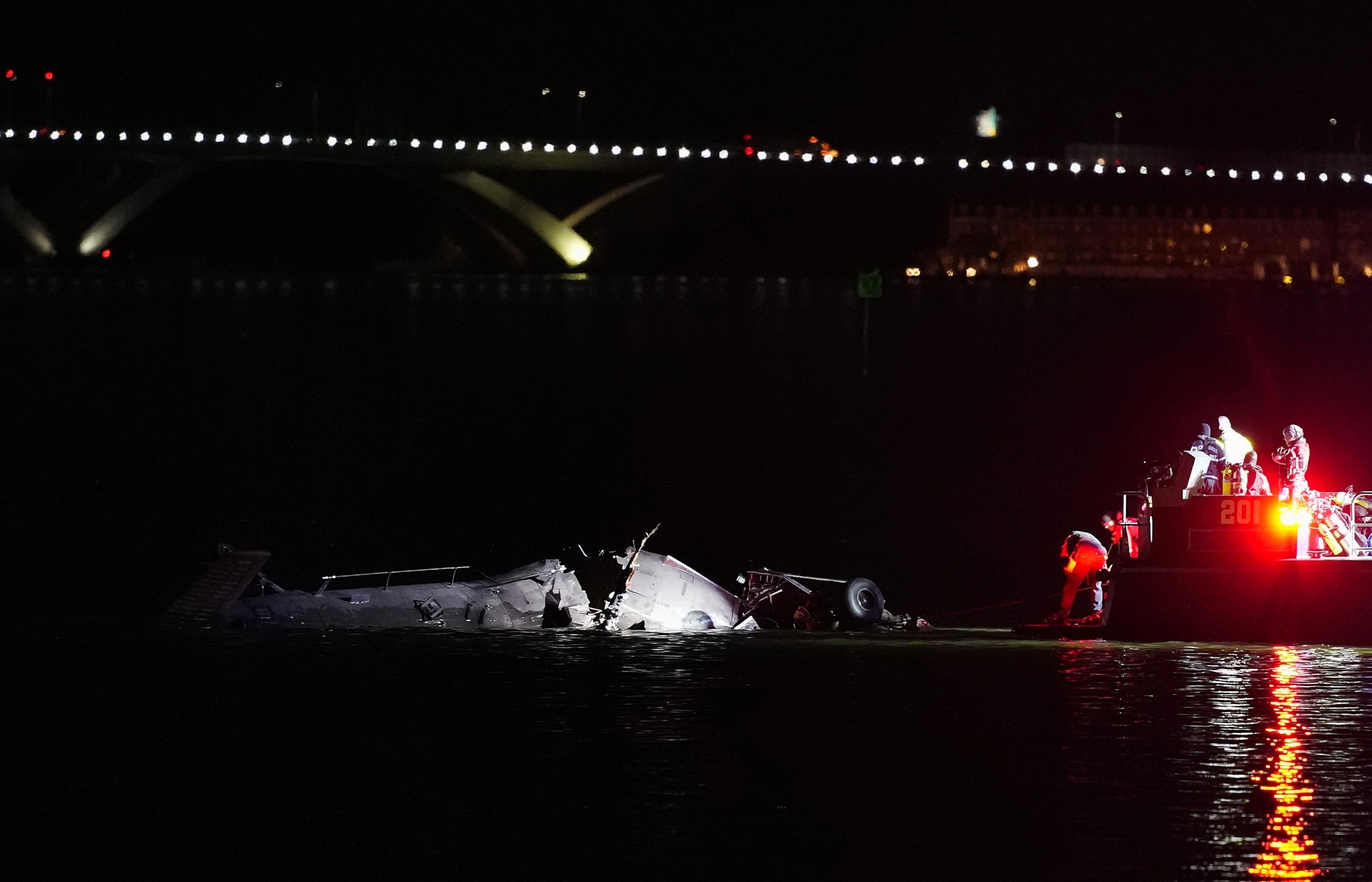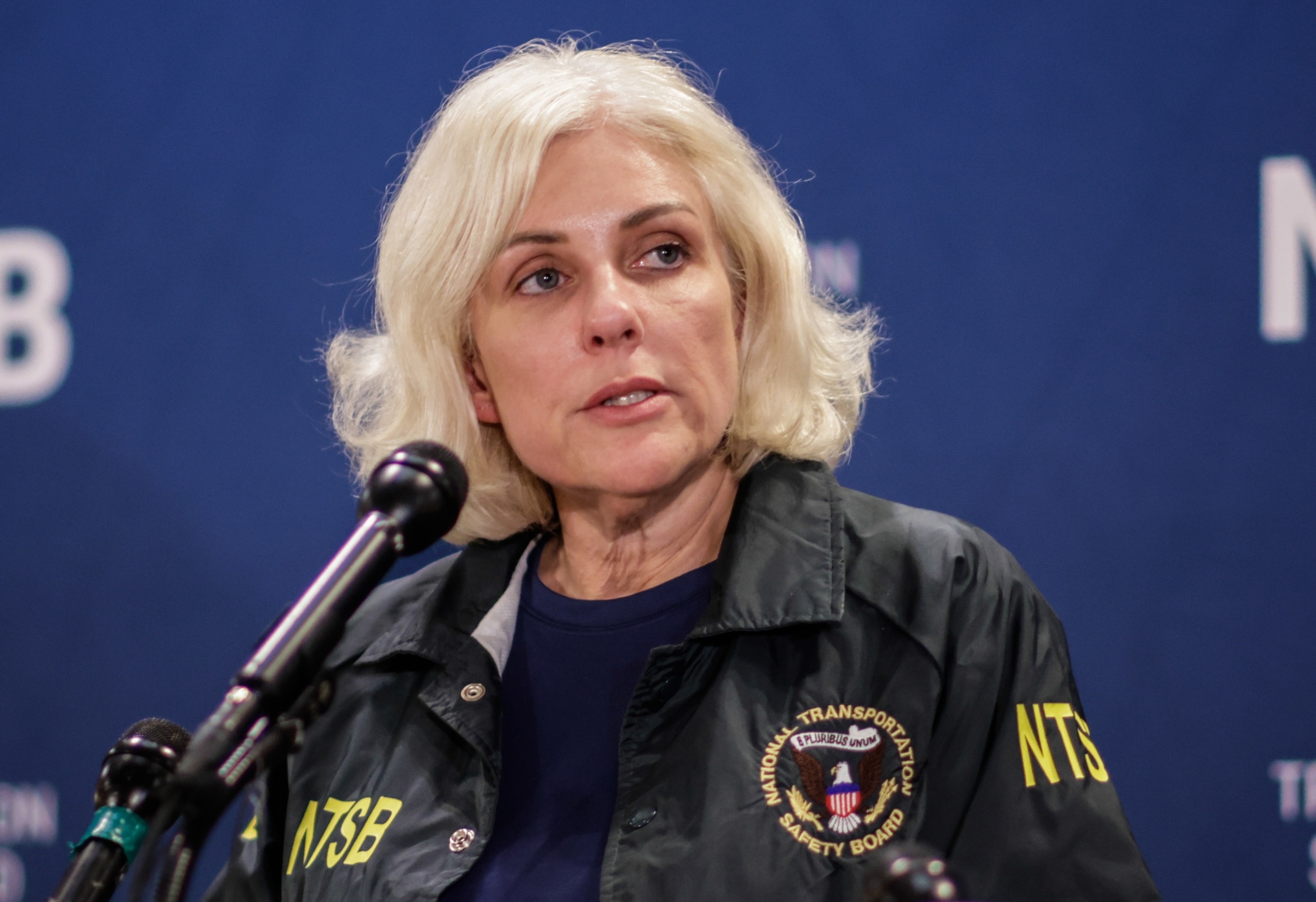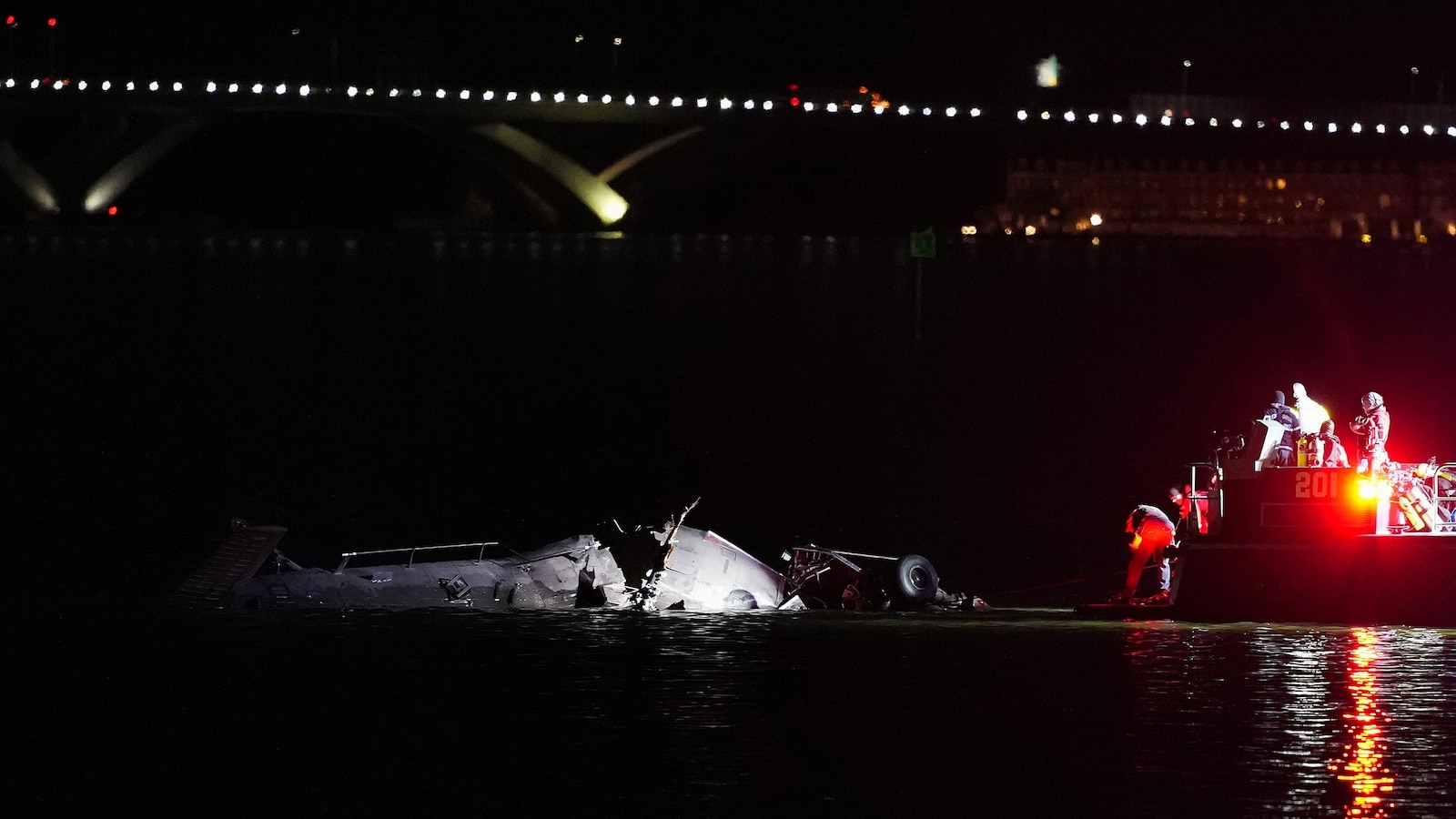NTSB begins public hearings on DC plane crash
The National Transportation Safety Board will hold three days of investigative hearings beginning Wednesday to question the Army and FAA officials as well as other parties to the investigation and present its findings from the ongoing investigation into January’s midair collision between American Airlines Flight 5342 and a Black Hawk helicopter near Washington’s Reagan National Airport.
The NTSB is also expected to release thousands of pages of evidence in a public docket Wednesday morning.
The regional jet was flying from Wichita, Kan., into Washington when it collided with the Army helicopter, which was on a training flight, killing all 64 passengers and crew on the jet and the three crew members in the helicopter.
The NTSB will focus on a variety of topics in the hearings. The first day will focus on the helicopter’s altimeters and data systems as well as the design and use of the airspace around the airport.

In this January 30, 2025, file photo, emergency units respond to airplane wreckage in the Potomac River near Ronald Reagan Washington Airport in Arlington, Virginia.
Andrew Harnik/Getty Images, FILE
“We’re going to focus on [air traffic control], so air traffic control and training, guidance, procedures, what was going on in the air that night, and again, that is within FAA’s purview,” NTSB Chair Jennifer Homendy told reporters on Tuesday.
The NTSB will also discuss collision avoidance systems on aircraft as well as any safety data that was available and unavailable and how safety management systems can be implemented and improved.
Witnesses who are testifying at the hearings include personnel from the Army, American Airlines and the Federal Aviation Administration.
Homendy also said the board would be releasing “thousands of pages of evidence” in a public docket on Wednesday.
On the eve of the investigative hearings, Sen. Ted Cruz introduced legislation called “The Rotor Act,” which would require all aircraft, including military, to transmit ADSB location when flying. The legislation is co-sponsored by eight other Republican senators. Cruz was joined at a news conference by Transportation Secretary Sean Duffy, Homendy, FAA Administrator Bryan Bedford and family members of the first officers and those who died in the crash.

In this April 11, 2025, file photo, Jennifer Homendy, the chair of the National Transportation Safety Board Speaks during a press conference after a helicopter crashed on the Hudson River in Jersey City, New Jersey.
View Press via Corbis via Getty Images, FILE
Automatic Dependent Surveillance–Broadcast (ADSB) is an aircraft system which allows it to transmit its location to other aircraft as well as to air traffic controllers. All aircraft flying above 18,000 feet are required to have ADSB but certain aircraft, including military aircraft, are exempt from transmitting ADSB location for security reasons.
Homendy said the NTSB recommended to the FAA to require ADSB on all aircraft nearly two decades ago.
“ADSB, and I can’t stress this enough, is a game-changer, a game-changer when it comes to safety and will provide, as we said in 2008 immediate and substantial contribution to safety. This will save lives. This legislation will save lives,” Homendy said.
In its preliminary report, the NTSB said there is no indication the Black Hawk crew could tell it was on a collision course with Flight 5342, which was landing at the same time the helicopter was passing the end of the runway.

Sen. Ted Cruz rides in an elevator outside of the Senate Chambers in the U.S. Capitol on July 10, 2025, in Washington, D.C.
Anna Moneymaker/Getty Images FILE
The helicopter crew might have had bad information from their altimeter, which measures height, as the pilots had differing altitudes in the seconds before the crash, the NTSB said in its preliminary report in February.
“We are looking at the possibility of there may be bad data,” Homendy said at the time.
The crew of the helicopter might not have heard a transmission from the tower that instructed them to go behind the airliner because the pilot may have keyed her radio at the same second and stepped on the transmission from ATC, the NTSB preliminary report findings showed.
One helicopter pilot thought they were at 400 feet and the other thought they were at 300 feet. The NTSB said it was not prepared to say exactly how high the helicopter was at impact.


